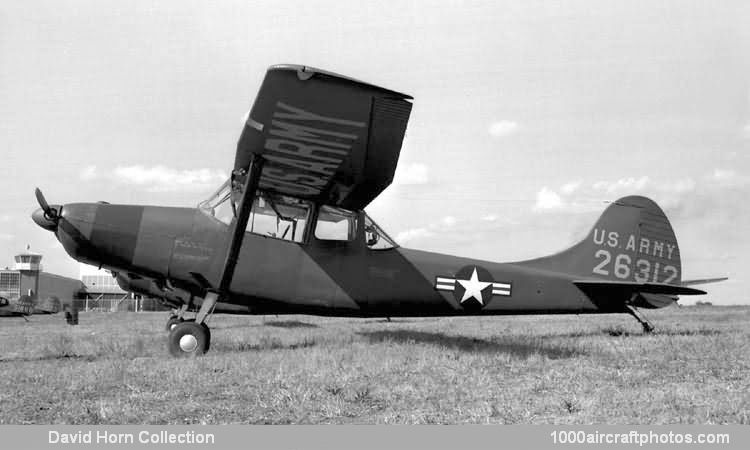04/30/2009. Remarks by Johan Visschedijk: "Three turboprop versions of the L-19 were built for evaluation contracts with the USAF, one XL-19B, s/n 52-1804, and two XL-19C, s/n 52-6311 and 52-6312.
The XL-19B was the world's first turboprop light airplane and it was a joint development project between Cessna, Boeing, the US Army, and the USAF. It was a modified L-19A Bird Dog, the only difference being in the engine installation and some instrumentation. The 210 hp Boeing XT-50-BO-1 engine was an outgrowth of a joint Boeing-Navy program of several years duration. The XL-19B made its first flight on 2 November 1952, and the altitude performance of the XL-19B was amazing. In fact, it was so good that Bill Thompson, Chief of Aerodynamics and Flight Test, set a world's record of 37,063 ft (11,297 m) on July 16, 1953 for aircraft in the second weight category.
In the meantime, the USAF was interested in another turboprop engine, the 280 hp Continental XT-51-T-1 (license-built Turboméca Artouste I). The XL-19C was a standard L-19A with modifications to install the new engine and two 42 gal (159 l) fuel tanks, twice the fuel capacity of a standard L-19. The XL-19C took to the air on September 1, 1953, followed by a second XL-19C on June 25, 1954.
The XL-19B and both XL-19C aircraft were based on the Cessna field for several years and used by military personnel to get acquainted with the state of the art of turboprop engines for light aircraft. Near the end of the program, the XL-19B had a flame-out on one of its evaluation flights and had to make a forced landing. In the process of landing, the ship struck a fence and flipped over, destroying the aircraft and injuring the pilot. The two XL-19C aircraft completed their evaluation phase without mishap. In 1955, the turboprop engines were removed and the airplanes were converted back to a standard L-19A configuration except for the large fuel tanks."
